See also
- Otto von Bismarck (1815–1898), Prussian statesman who dominated German and European affairs
- Bismarck (disambiguation)
Fürst Bismarck (Prince Bismarck) may refer to:

Blohm+Voss (B+V), also written historically as Blohm & Voss, Blohm und Voß etc., is a German shipbuilding and engineering company. Founded in Hamburg in 1877 to specialise in steel-hulled ships, its most famous product was the World War II battleship Bismarck. In the 1930s, its owners established the Hamburger Flugzeugbau aircraft manufacturer which, shortly before the outbreak of World War II, adopted the name of its parent company. Following a difficult period after the war, B+V was revived, changing ownership among several owners, as Thyssen Group and Star Capital. In 2016, it became a subsidiary of Lürssen and continues to supply both the military and civilian markets. It serves two areas – new construction of warships as NVL B.V. & Co. KG, and new construction and refitting of megayachts. The company has been in operation, building ships and other large machinery, almost continuously for 145 years.
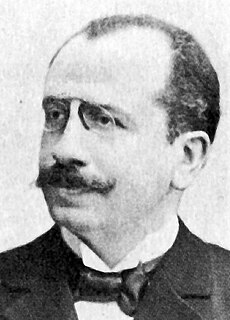
Albert Ballin was a German shipping magnate. He was the general director of the Hamburg-Amerikanische Packetfahrt-Actien-Gesellschaft (HAPAG) or Hamburg-America Line, which for a time was the world's largest shipping company. Being the inventor of the concept of the cruise ship, he is known as the father of modern cruise ship travel.
The Hanseatic League was a trading alliance in northern Europe in existence between the 13th and 17th centuries.
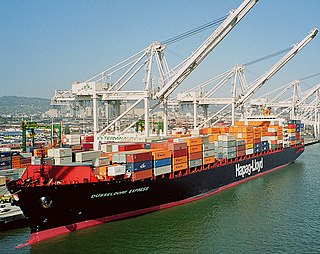
Hapag-Lloyd AG is a German international shipping and container transportation company. Hapag-Lloyd was formed in 1970 through a merger of Hamburg-American Line (HAPAG) and North German Lloyd.

SS Imperator was a German ocean liner built for the Hamburg America Line, launched in 1912. At the time of her completion in June 1913, she was the largest passenger ship in the world by gross tonnage, surpassing the new White Star liner Olympic.

The Hamburg-Amerikanische Packetfahrt-Aktien-Gesellschaft (HAPAG), known in English as the Hamburg America Line, was a transatlantic shipping enterprise established in Hamburg, in 1847. Among those involved in its development were prominent citizens such as Albert Ballin, Adolph Godeffroy, Ferdinand Laeisz, Carl Woermann, August Bolten, and others, and its main financial backers were Berenberg Bank and H. J. Merck & Co. It soon developed into the largest German, and at times the world's largest, shipping company, serving the market created by German immigration to the United States and later, immigration from Eastern Europe. On 1 September 1970, after 123 years of independent existence, HAPAG merged with the Bremen-based North German Lloyd to form Hapag-Lloyd AG.

Norddeutscher Lloyd was a German shipping company. It was founded by Hermann Henrich Meier and Eduard Crüsemann in Bremen on 20 February 1857. It developed into one of the most important German shipping companies of the late 19th and early 20th centuries, and was instrumental in the economic development of Bremen and Bremerhaven. On 1 September 1970, the company merged with Hamburg America Line (HAPAG) to form Hapag-Lloyd AG.

RMS Majestic was a White Star ocean liner working on the North Atlantic run, originally launched in 1914 as the Hamburg America Line liner SS Bismarck. At 56,551 gross register tons, she was the largest ship in the world until completion of SS Normandie in 1935.
Bremen is a city in northwestern Germany.

The first SS Fürst Bismarck was an ocean liner built in 1890 by AG Vulcan for the Hamburg America Line. A steamship of 8,430 gross register tons, it was assigned to transatlantic crossings between Hamburg Germany and New York City, United States. Fürst Bismarck and the sister ships were part of an express fleet that usually made the trip in five to six days.

The second Fürst Bismarck was an ocean liner of 8,332 gross tons built in Glasgow by the Fairfield Shipbuilding and Engineering Company for the Hamburg America Line. Launched on 22 March 1905, the vessel made her maiden voyage between Hamburg and New York, on 19 August of the same year.
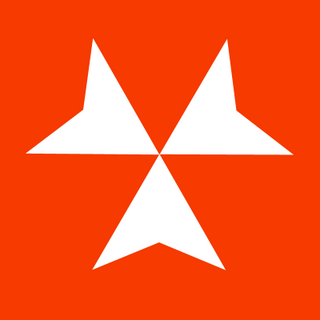
Hamburg Atlantic Line was an ocean liner and cruise ship operating company established in Hamburg, West Germany in 1958 by Axel Bitsch Christensen and Vernicos Eugenides, the latter being the adopted son of Home Lines' founder Eugen Eugenides. In 1966 the company changed its name to German Atlantic Line. Liner services were abandoned in 1969, after which the company's ships concentrated solely on cruising. Due to the 1973 oil crisis, German Atlantic Line closed down in December 1973.
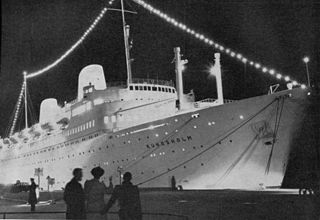
MS Kungsholm was a combined ocean liner / cruise ship built in 1953 by the De Schelde shipyard in Vlissingen, the Netherlands for the Swedish American Line. Between 1965 and 1981 she sailed for the North German Lloyd and their successor Hapag-Lloyd as MS Europa. From 1981 until 1984 she sailed for Costa Cruises as MS Columbus C. She sank in the port of Cadiz, Spain after ramming a breakwater on 29 July 1984. The vessel was refloated later that year, but sent to a Barcelona shipbreaker in 1985 for scrapping.
A number of motor ships have been named MS Europa after the mythical Europa and the continent of Europe:
Bismarck most often refers to:

The Imperator-class ocean liners were a series of three ocean liners designed for the Hamburg America Line, commonly known as HAPAG. These three ships were commissioned by the chairman of HAPAG Albert Ballin. Namely the Imperator (1912), the Vaterland (1913) and the largest, the Bismarck (1914). These liners were over 50,000 tons, sported three funnels and had a length ranging from 906 to 956 feet. Vaterland is the largest passenger ship operated by a German shipping company.
Several naval ships were named Helgoland after the island of Heligoland or the Battle of Helgoland, an action during the Second Schleswig War.
SS Prinz Adalbert, was a German ocean liner of the Hamburg America Line (Hapag), ordered as one of five Prince-class vessels for their newly established service to the East Coast of South America. She was built by Bremer Vulkan Schiffbau & Machinen Fabrik, Bremen-Vegesack and launched on 21 August 1902. She sailed from Hamburg on her maiden voyage to Brazil on 20 January 1903, and three years later was in service between Genoa and Buenos Aires. Later the liner moved to North Atlantic services.

SS Burdigala was an ocean liner that sailed the Atlantic Ocean from 1898 until World War I. The ship was built as the Kaiser Friedrich in 1898 for Norddeutscher Lloyd (NDL), a German shipping line. Designed to break the speed record for a transatlantic liner and thereby win the Blue Riband, the Kaiser Friedrich never achieved the necessary speeds. After a short career with NDL and an equally short period of service with NDL's main German competitor, the Hamburg-Amerikanische Packetfahrt-Aktien-Gesellschaft, the ship was mothballed for a decade. After being sold to the French shipping line Compagnie de Navigation Sud-Atlantique, it re-entered service as SS Burdigala. In 1916, while en route from Thessaloniki to Toulon, the liner struck a mine laid by the German U-boat U-73 in the Aegean Sea and sank near Kea, Greece.
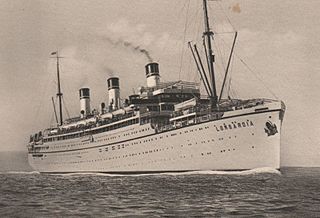
SS Lombardia was one of a pair of a pair of transatlantic steam ocean liners that were launched in 1914 in Germany for the Hamburg America Line (HAPAG), sold to a Dutch shipping line in 1916, and seized by the United States as World War I reparations in 1922. United American Lines (UAL) operated her until 1926, when HAPAG bought her back.